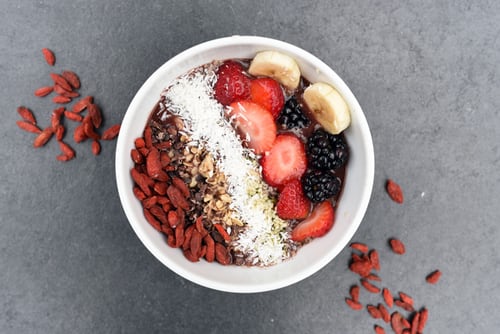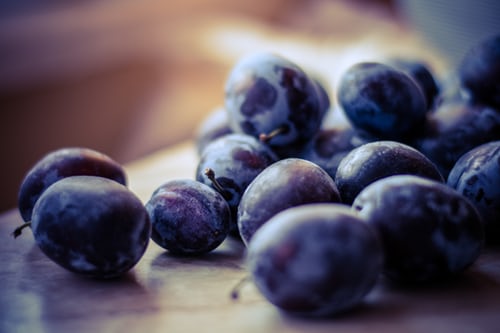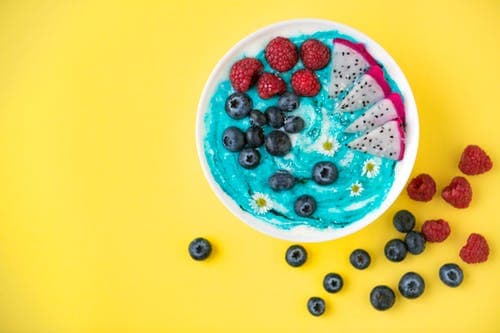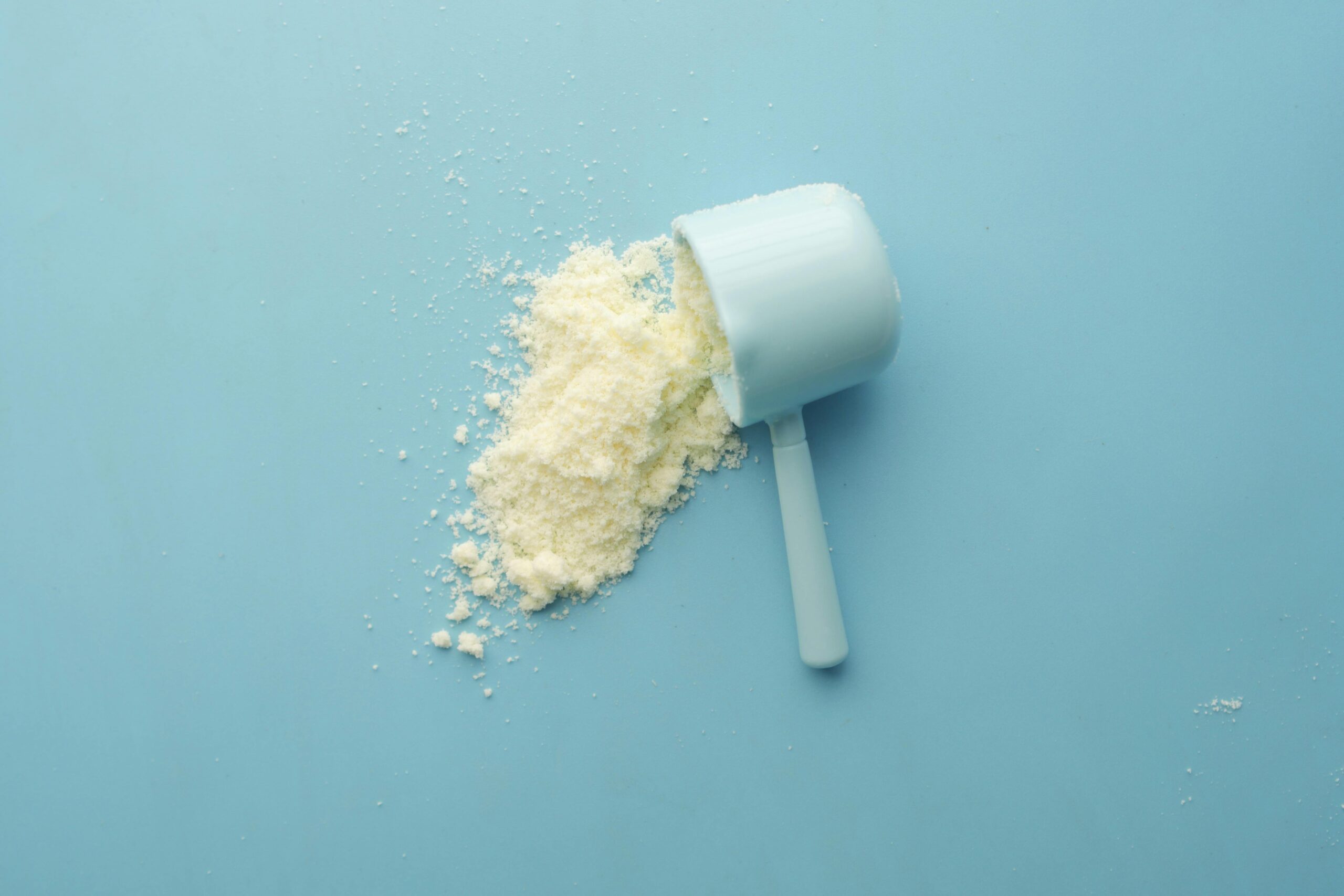What Is the Definition of a Superfood?
In a nutshell a “Superfood” is a food claimed to have mental or physical health benefits such as disease prevention or antiaging effects. These and other such benefits are attributed to the foods especially or unusually high antioxidant, phytonutrient, vitamin or other nutrient content.
As you can probably already tell this is a very loose classification and the definition of what you can label a “Superfood” is left largely open to interpretation.
Essentially “Superfood” is nothing more than a marketing term popularised by the media, supermarkets and healthcare companies largely to push the sales of pills, powders and other potions containing any mix of food components.
Does This Mean I Shouldn’t Bother Eating Superfoods?

Does this mean there’s anything wrong with eating “Superfoods”? Not even slightly. Many foods sold as Superfoods are healthful not to mention delicious just in the same ways that many foods sold as well foods are healthful not to mention delicious being that they are the same thing – food!
Where there probably is something wrong with eating them is if the shiny marketing has worked so well that you feel the need for your “Superfoods” to come in the form of special pills, powders of other concoctions…
Why? Because as with everything health and nutrition wise while there are irrefutable problems that come with having too little there are equally as detrimental problems that come with having too much and even the healthy antioxidants are not exempt from this. Which means your “Superfood” supplementation with the best of intentions may in some cases actually be working against you and even increasing your risk of the very diseases you are trying to prevent by taking them in excess of what your body needs. As one example of this (and there are many others) men taking vitamin E supplements were found to have an increased risk of prostate cancer than those taking placebo1.
Which is why any dietitian will highlight to you the importance of choosing “food first” (if you want to know the others see my earlier post “What Is Healthy Eating Anyway?”). This simple but powerful principal recognises that wholefoods are always going to be superior to an isolated food component not just because of the risk of overdose but because getting your nutrients primarily through food sources ensures you get a wide mix.
Nutritional Profile of a Superfood Vs. Ahem A Food

Here’s a quick nutritional comparison between a widely known superfood -the goji berry- and a similar food that wouldn’t be considered a Superfood -the humble prune- to highlight the fact that there’s not necessarily that much difference between the two in terms of one standing out as an obviously elite nutritional superstar(food).
Nutritional Composition of a Goji Berry 1-3:

46% carbohydrate
16% dietary fibre
13% protein
1.5% fat.
Vitamins: Vitamin C, A, riboflavin, thiamine, nicotinic acid.
Minerals: Copper, manganese, iron, calcium, magnesium, and selenium.
High biological activity components in goji berries are: polysaccharides, carotenoids, and phenolics.
Nutritional Composition of a Prune

64% carbohydrate.
7% dietary fibre.
2.2% protein
0.4% fat.
Vitamins: vitamin C, vitamin K, A, B6, folate, riboflavin and niacin.
Minerals: Iron, Manganese, Copper, Magnesium, Boron, Zinc, Selenium, Copper and Magnesium.
High biological activity components in prunes are: polysaccharides, polyphenols and antioxidants4.
What This Quick Comparison Shows

Interestingly where the nutritional composition of goji berries and prunes differ most is actually in their macronutrient composition (carbs, protein and fats) rather than their micronutrients. This isn’t a Superfood characteristic and just to let you know goji berries are unusually high in protein and fat for a fruit. The point I want to come across more than that is that the phytonutrient, antioxidant and micronutrient composition aka the key features marketed as setting Superfoods apart from other foods are not so vastly different.
You can see from the above quick comparison that both goji berries and prunes provide good sources of many essential micronutrients (vitamins and minerals) as well as antioxidants and phytonutrients.
Yes, it is absolutely true that goji berries do have a high antioxidant content which may protect against oxidative stress and damage to DNA, body fats and proteins and thus confer health benefits associated with this (for example anti-cancer and ant-inflammation) but this antioxidant content is similar to other plant foods5-9 including in this example prunes. Thus, both foods would be healthy choices without one necessarily being a prioritised “Superfood”.
The Bottom Line

Be aware of your intentions behind choosing Superfoods and manage your intentions and expectations against reality.
If you feel you have to choose goji berries (macca, spirulina, acai, inca berries or other) but really you just wanted to munch on a couple of prunes (peanuts, sultanas, apricots or other food) you’re more than likely not doing yourself any favours because Superfoods are not necessarily any better for you than any other regular food (aka at the end of the day what a superfood is).
Also keep in mind that in order to have so much health and nutrition information behind a food someone must have been responsible for funding and actually carrying out the research which means that many foods are simply left out. This doesn’t mean that these foods are any less good for us just that we don’t have as much information on them as others. People were eating and enjoying the health benefits of goji berries long before they were sold as a “Superfood”. That is, we don’t know what we don’t know.
*As a side note often the research into the health benefits of a food are carried out by a company who is invested in the production, sales and hence profit of the food. Whist this doesn’t mean the information or health claims are false, less meaningful or to be ignored just that they’re more accessible than health information about things which aren’t so heavily marketed (a pineapple for example).
Overall consumption of plant foods including fruit and vegetables, as well as grains in has been strongly associated with reduced risk of many chronic diseases including cardiovascular disease, cancer (it’s been estimated that one third of all cancer deaths in the United States could be avoided through appropriate dietary modification10,11) diabetes, Alzheimer disease, cataracts, and age-related functional decline12-15. Therefore, clearly fruits and vegetables are good for us but these health benefits are not attributed to just one or even a few “Superfoods” and we shouldn’t be unnecessarily focusing on specific nutrients within a food at the expense of others because if we know anything concrete about human nutrition it is that no vitamin, mineral or other food constituent works in isolation. They all operate synergistically and rely on the correct amounts of others to carry out their important functions.
The moral of the story is this; choose a wide variety of foods to maximise your chances of supplying your body with all the micronutrients, phytonutrients, antioxidants and other amazing constituents both those we know of and those we’re yet to discover, name and attribute healthful properties to.
Finally remember that food is just food.

While we do not know all there is to know about nutrition, we know enough to know that food is important and what you eat does affect your health.
What we also know is that food is not the be all and end all of health and if there are other things going on in your life (for example you feel you have no purpose in your life, you are stressed with your work, family or relationships majority of the time, you’re spending no time in nature or doing things you enjoy or you’re only sleeping 4 hours a night) there’s evidently other areas and changes you can make that will have a bigger impact than adding in some “Superfoods”.
Changing your diet will get you so far and I would never underestimate the power of food as it literally affects your body 24/7 but as powerful a tool as it is there are some things food cannot do.
When looking to enhance your mental or physical health it’s never going to be enough to address one area of your life in isolation.
On that note I am going to leave you with the wise words of Fran Lebowitz “Food is an important part of a balanced diet.”
With My Whole Heart I Hope Your Found This Information Useful and Inspiring.

Become Great. Live Great.
Bonnie.
Reference
- Jain S, Munver R, Sawczuk IS. Vitamin E and selenium do not decrease prostate cancer incidence: vitamin E may actually increase it. Evidence – Based Medicine 2012 10;17(5):151.
- Q. Luo, Y. Cai, J. Yan, M. Sun, H. Corke, “Hypoglycemic and hypolipidemic effects and antioxidant activity of fruit extracts from Lycium barbarum,” Life Sciences. 2004. 76:(2);137-149.
- C. Wang, S. Chang, B. S. Inbaraj, B. Chen, “Isolation of carotenoids, flavonoids and polysaccharides from Lycium barbarum L. and evaluation of antioxidant activity,” Food chemistry.120:(1)184-192.
- Zheng FM, Zhang H, Teh SS, Wang CW, Zhang Y, Hayford F, et al. Goji Berries as a Potential Natural Antioxidant Medicine: An Insight into Their Molecular Mechanisms of Action. Oxidative Medicine and Cellular Longevity 2019;2019:9.
- Pérez-jiménez J, Neveu V, Vos F, Scalbert A. Identification of the 100 richest dietary sources of polyphenols: an application of the Phenol-Explorer database. Eur J Clin Nutr. 2010. 11;64:S112-20.
- Y. Cao, Z. F. Ma, H. Zhang, Y. Jin, Y. Zhang, F. Hayford, “Phytochemical properties and nutrigenomic implications of Yacon as a potential source of prebiotic: current evidence and future directions,” Food. 2018. 7:(4).
- Z. F. Ma, H. Zhang, “Phytochemical constituents, health benefits, and industrial applications of grape seeds: a mini-review,” Antioxidants. 2017. 6:(3).
- K. Ravichanthiran, Z. F. Ma, H. Zhang, Y. Cao, C. W. Wang, S. Muhammad, E. K. Aglago, Y. Zhang, Y. Jin, B. Pan, “Phytochemical profile of brown rice and its nutrigenomic implications,” Antioxidants. 2018. 7:(6).
- Z. F. Ma, Y. Y. Lee, “Virgin coconut oil and Its cardiovascular health benefits,” Natural Product Communications. 2016:11(8);1151-1152.
- H. Zhang, Z. F. Ma, “Phytochemical and pharmacological properties of Capparis spinosa as a medicinal plant,” Nutrients. 2018. 10:(2).
- Willett WC. Diet, nutrition, and avoidable cancer. Environ Health Perspect. 1995; 103(8): 165–170.
- Doll R and Peto R. Avoidable risks of cancer in the United States. J Nat Cancer Inst. 1981; 66: 1197– 1265.
- Hu FB. Plant-based foods and prevention of cardiovascular disease: an overview. Am J Clin Nutr 2003; 78 (Suppl): 544S-551S.
- Van Duyn MA and Pivonka E. Overview of the health benefits of fruit and vegetable consumption for the dietetics professional: Selected literature. J Am Diet Assoc. 2000; 100: 1511-1521.
- Temple NJ. Antioxidants and disease: more questions than answers. Nutr Res. 2000; 20: 449–59.
- Willett WC. Diet and health: what should we eat? Science 1994; 254:532–537.



